Pest Problems in New Zealand Homes: Complete Reference Guide
New Zealand’s unique biogeography has created a diverse and fragile ecosystem that is home to many species found nowhere else on Earth. When humans arrived, they unintentionally introduced a range of animals and insects that have since become pests. Today, Aotearoa New Zealand manages some of the highest densities of invasive social wasps in the world and contends with introduced rodents, biting insects and nuisance birds that threaten public health, property and biodiversity. This e‑book provides an up‑to‑date overview of the most common household pests in New Zealand and offers practical guidance on identification, health risks, management and prevention. Written in Australian English, it is intended as the definitive resource for homeowners, renters, landlords and anyone interested in protecting their homes and environment from unwanted invaders.

The article is organised into sections that reflect the major taxonomic groups of household pests and the different ways they impact homes. Each chapter introduces the biology and behaviour of a pest, describes the problems it causes, and outlines effective control strategies. Comparative tables summarise key information, while charts illustrate trends such as economic costs and nest densities.
1. Overview of New Zealand’s Pest Landscape
1.1 Introduction to pest ecology in New Zealand
New Zealand’s temperate maritime climate, with relatively mild winters and warm, wet summers, provides suitable habitats for a range of introduced pests. The country’s isolation historically limited native insect and mammal diversity, so many ecological niches were unfilled. European settlement introduced rats, mice, ants, social wasps, fleas, mosquitoes and larger mammals such as possums. With few natural enemies and abundant food sources, these species thrived. Lowland forests, farmlands and urban gardens now harbour huge numbers of wasp nests, rodent colonies and insect breeding sites.
Household pests are species that live in or around human dwellings and have a detrimental effect on health, property or well‑being. In New Zealand, the most problematic pests include:
- Insects: cockroaches, fleas, flies, ants, bed bugs, mosquitoes, wasps and sandflies.
- Arachnids: spiders (katipō, redback and whitetail) and ticks.
- Rodents: the house mouse (Mus musculus), black rat (Rattus rattus), brown rat (Rattus norvegicus), and the Polynesian rat or kiore (Rattus exulans).
- Birds: feral pigeons, red‑billed gulls, sparrows and starlings.
- Other mammals: brushtail possums and rabbits, which occasionally invade roofs or gardens.
The prevalence of each pest varies by region and season. Warmer climates favour insects such as ants and mosquitoes, while rodents surge during mast years when forest trees produce heavy seed crops. Urban settings provide food and shelter for rats, mice, pigeons and possums. Understanding the biology and behaviour of each pest is therefore essential for effective management.
1.2 Economic and social impacts
Pest infestations impose both direct and indirect costs. A 2019–20 study estimated that pests cost New Zealand NZ$9.2 billion per year—about 2.9 % of GDP—up from NZ$4.2 billion (1.9 % of GDP) a decade earlier. Costs include agricultural yield losses, reduced biodiversity, damage to infrastructure, contamination of food supplies, medical treatment for bites and stings, and mental‑health impacts such as anxiety and distress. Certain species have outsized effects: invasive wasps destroy or damage 8–9 % of honeybee hives annually and rob honey, resulting in significant losses to beekeepers. Rodent infestations can cause fires by gnawing electrical wiring, contaminate food with faeces and urine, and spread diseases such as leptospirosis.
Figure 1 – Economic cost of pests
Figure 1. The cost of pests to New Zealand’s economy more than doubled between 2009/10 and 2019/20.

1.3 Human health considerations
Pests compromise human health through bites, stings, allergic reactions and disease transmission. Cockroaches can spread dysentery, salmonella and diarrhoea by contaminating food and surfaces. Fleas may carry tapeworms and cause intense itching. Mosquitoes in New Zealand do not currently transmit disease, but exotic species could bring chikungunya, dengue, malaria or yellow fever. Social wasp stings can trigger severe anaphylactic reactions; around 3–6 deaths occur every 20 years due to wasp or bee stings in New Zealand. Rodent urine is a vector for leptospirosis, a potentially life‑threatening illness, and bird droppings contain bacteria and fungi that may cause respiratory diseases. Awareness of these risks helps households prioritise pest control measures.
2. Insect Pests
2.1 Cockroaches

Biology and identification
Cockroaches are ancient insects characterised by flattened bodies, long antennae and running legs. The two main pest species in New Zealand are the American cockroach (Periplaneta americana) and German cockroach (Blattella germanica). American cockroaches are reddish‑brown, up to 40 mm long, and prefer warm, moist environments such as sewers and basements. German cockroaches are smaller (12–15 mm), light brown and highly reproductive; they infest kitchens, bathrooms and laundries. Both species are nocturnal, hiding in cracks and crevices during the day.
New Zealand also has native bush cockroaches (genus Celatoblatta) that live outdoors and pose no health risk. Only a handful of introduced species cause problems.
Health risks
Cockroaches thrive in unhygienic environments and can spread human pathogens. Health New Zealand warns that they can transmit dysentery, salmonella, and diarrhoea. They may also trigger asthma and allergies through their shed skins and droppings. Cockroaches contaminate food and produce a distinct, unpleasant odour. Because they can survive months without food and up to four weeks without water, infestations can persist if not treated thoroughly.
Control measures
Prevention involves sealing cracks and gaps in walls and floors, fixing leaks to reduce dampness, and keeping kitchens clean. Food should be stored in sealed containers, and rubbish disposed of promptly. Sticky traps, gel baits and residual insecticides are effective control methods. Professional pest control may be necessary for large infestations. Homeowners should avoid using surface sprays indiscriminately, as they can disperse the colony.
2.2 Fleas
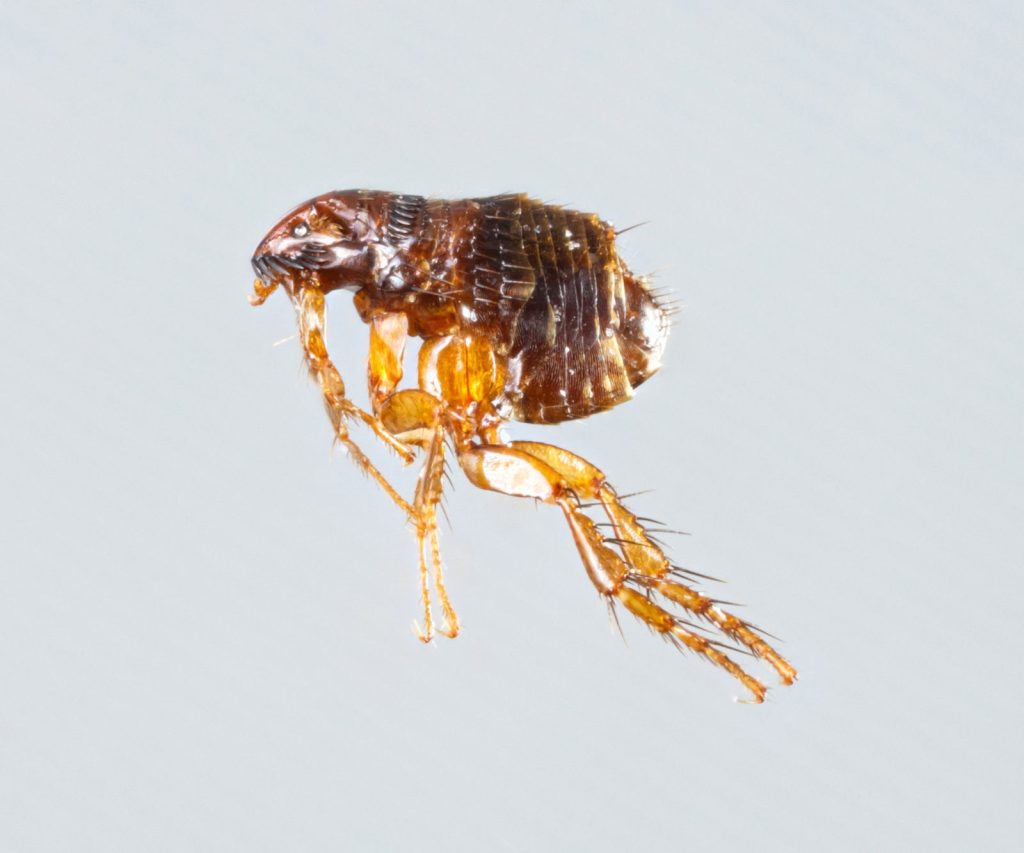
Biology and species
Fleas are wingless, laterally flattened insects that feed on blood. Adult fleas are about 1–5 mm long and can jump great distances relative to their size. The cat flea (Ctenocephalides felis) and bird flea (Ceratophyllus gallinae) are common in New Zealand, while the human flea (Pulex irritans) is rare. Adult fleas live on hosts such as cats, dogs or birds, while eggs, larvae and pupae develop in nests, carpets and bedding.
Health risks
Flea bites cause itchy red welts; scratching may lead to secondary infections. Fleas can transmit tapeworms to pets and humans if infected fleas are ingested. Historically, fleas carried bubonic plague, but this disease is absent from modern New Zealand. Controlling fleas reduces discomfort and prevents tapeworm transmission.
Control measures
Treat pets with veterinary‑approved topical or oral flea treatments. Regularly wash pet bedding in hot water and vacuum carpets, upholstery and car interiors to remove eggs and larvae. Using insect growth regulators or aerosol insecticides may be necessary for severe infestations. Outdoor flea populations around bird nests may also require treatment.
2.3 Flies

Biology and species
Houseflies (Musca domestica), blow flies (Calliphoridae) and fruit flies (Drosophilidae) are common around homes. Houseflies are grey, 6–8 mm long and breed in decaying organic matter. Blow flies have metallic bodies and breed in carrion or rubbish. Fruit flies are tiny (3 mm), tan‑coloured and attracted to fermenting fruit and vegetables. Flies have rapid life cycles—some complete egg‑to‑adult development within two weeks in warm conditions—and they can reproduce year‑round inside heated buildings.
Health risks
Flies carry pathogenic microorganisms on their bodies and in their guts, contaminating food and surfaces as they feed and defecate. They can transmit bacteria such as Salmonella and Escherichia coli, as well as parasites and viruses. Their presence is unsightly and unhygienic.
Control measures
Sanitation is the key to fly control. Dispose of food waste and rubbish promptly, clean drains and compost bins, and keep pet waste contained. Fit fly screens on windows and doors, and use lidded bins. Commercial traps, UV light units and residual insecticides can reduce adult populations. Biological control (e.g., parasitic wasps) may be used on farms.
2.4 Bed Bugs
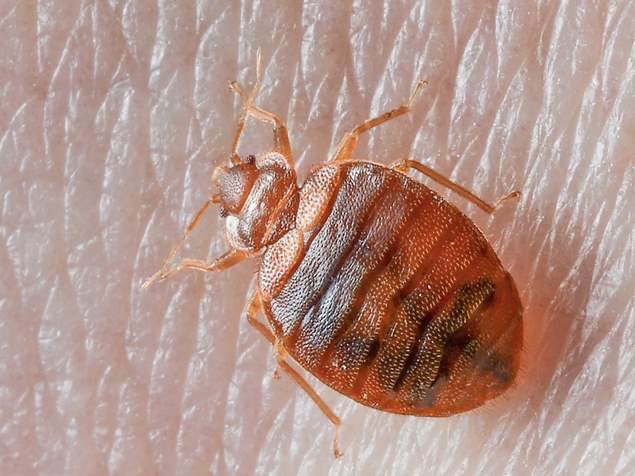
Biology and identification
Bed bugs (Cimex lectularius) are small, flat insects that feed on the blood of sleeping humans and animals. Adults are reddish‑brown and 4–7 mm long, while eggs are around 1 mm long. Bed bugs hide in mattress seams, bed frames, headboards, skirting boards and luggage during the day and emerge at night to feed. They can survive for months without a blood meal.
Health risks
Bed bug bites cause itchy red welts, often in linear patterns. Reactions vary from mild irritation to severe allergic responses; some people may develop anaphylaxis. The bites do not transmit diseases, but they cause distress and sleep disruption.
Control measures
Inspect bedding, mattresses and second‑hand furniture before bringing them home. When travelling, check hotel beds for signs of bed bugs and keep luggage off the floor. Control requires a comprehensive approach: wash and dry bedding and clothing at high temperatures (at least 60 °C); vacuum mattresses and carpets; use encasement covers; and apply residual insecticides or heat treatments. Professional pest controllers may use steam or insect growth regulators.
2.5 Mosquitoes
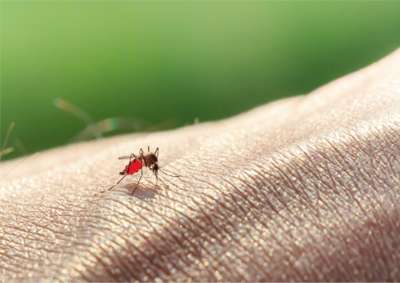
Species in New Zealand
There are 16 mosquito species established in Aotearoa New Zealand. None currently transmit diseases to humans, but exotic species introduced by travellers could carry pathogens such as dengue, malaria and yellow fever. Local species include Aedes notoscriptus (which bites during the day), Culex pervigilans (dusk‑biter) and Anopheles antipodeus (New Zealand’s only native Anopheles mosquito). Mosquitoes breed in standing water—ponds, birdbaths, blocked gutters and containers—and become more abundant during warm, wet summers.
Health risks
Mosquito bites cause itchy welts and occasional allergic reactions. In New Zealand the bites are usually a nuisance rather than a health threat; however, travellers returning from tropical regions may introduce mosquito‑borne diseases. It is therefore prudent to control mosquito populations around homes.
Control measures
Eliminate standing water by emptying buckets, plant saucers and tarpaulins; clear blocked gutters; and cover rainwater tanks. Install insect screens on windows and doors, and use mosquito nets over beds if necessary. Apply insect repellent containing DEET (20–50 %) to exposed skin when outdoors at dawn or dusk. Indoor and outdoor insecticide sprays or electric zappers can reduce adult mosquitoes. Natural predators, such as dragonflies and mosquito fish (where permitted), help keep populations in check.
2.6 Ants

Diversity and key species
New Zealand has about 40 species of ant, of which 11 are endemic (native) and 29 are introduced. Only a few species commonly become household pests, but they can form super‑colonies with hundreds of thousands of workers. Important pest species include:
- Argentine ant (Linepithema humile) – Light to dark brown workers about 1.6 mm long. They form massive colonies with multiple queens and can displace other ant species.
- Black house ant (Ochetellus spp.) – Shiny black, 2.5–3 mm long, attracted to sweets and grease.
- Coastal brown ant (Pheidole megacephala) – Light yellowish brown; feeds on meat, grease and sweets.
- Southern ant (Monomorium antarcticum) – New Zealand’s most common native ant; workers are 3–4 mm long and inhabit forests, grasslands and gardens.
Health and nuisance issues
Ants contaminate food and can damage electrical equipment. Argentine ants can form super‑colonies that displace native fauna and aggravate gardeners. Some species, such as the coastal brown ant, may bite. Winged reproductive ants can swarm in warm months, causing alarm.
Control measures
Locate and destroy nests if possible. Use gel baits that ants carry back to the colony, ensuring the queen and larvae are eliminated. Residual sprays can create barriers around foundations and entry points. Remove food sources by cleaning up spills and storing food in sealed containers. Professional pest controllers may be needed for persistent infestations.
2.7 Wasps and Bees
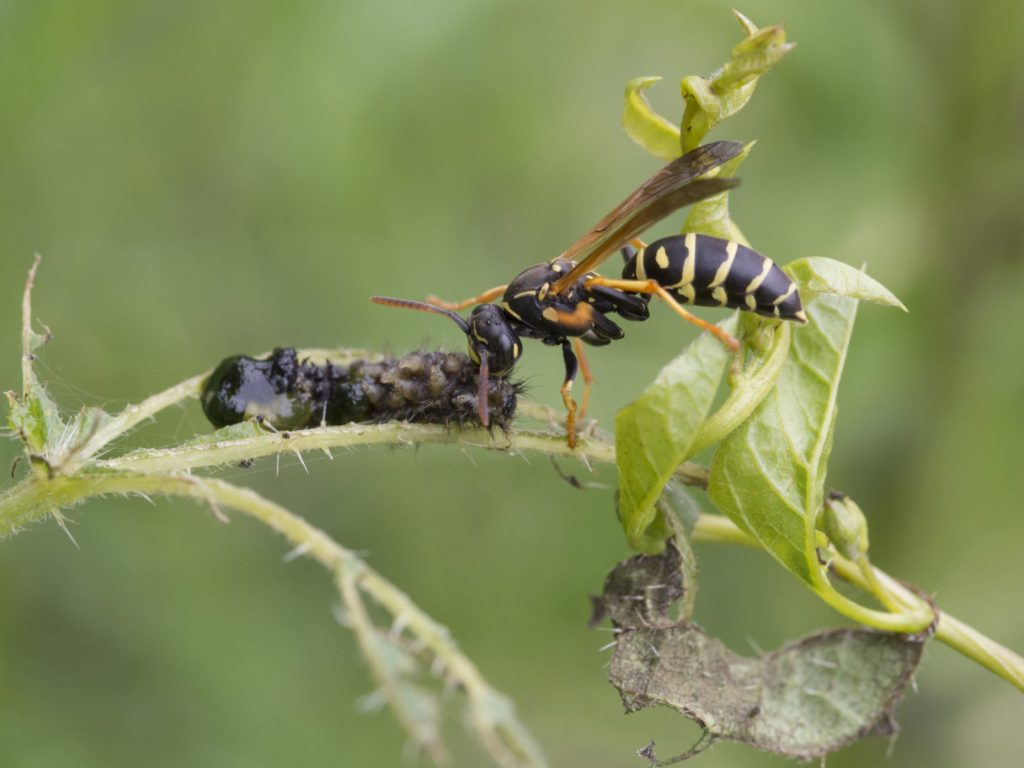
Social wasps
New Zealand has no native social wasps, but five introduced species are established: three paper wasps (Polistes spp.) and two Vespula species (German wasp Vespula germanica and common wasp Vespula vulgaris). The German wasp arrived in 1945 and the common wasp established in the late 1970s. These wasps build nests with a queen and workers and forage for insects, nectar and sugary foods. New Zealand’s mild climate and abundant honeydew enable extremely high wasp densities; beech forests can average 12 nests per hectare (~10 000 wasps) and sometimes reach 50–60 nests per hectare. Biomass of social wasps in honeydew forests exceeds that of all native birds combined.

Health and economic impacts
Wasps spoil outdoor recreation and can inflict painful stings. Some people experience life‑threatening anaphylaxis; between three and six deaths occur every 20 years due to wasp or bee stings. In the beekeeping industry, wasps destroy 8–9 % of honeybee hives each year and rob honey stores, costing farmers substantial losses. Wasps also prey on native insects, birds and lizards, disrupting ecosystems.
Control measures
Early spring is ideal for locating and destroying wasp nests before they produce large numbers of workers. Wear protective clothing and use insecticidal dust or foam directly into nest entrances; do this at night when wasps are less active. Sugar‑based baits such as Vespex® (available through licenced suppliers) are effective for controlling common wasps in beech forests. Avoid leaving food or sweet drinks uncovered outdoors. Encourage native birds and insects that prey on wasps.
Figure 2 – Wasps nest densities in beech forest
Figure 2. Average nest densities in honeydew beech forests (12 nests per hectare) compared with the highest recorded densities (approx. 55 nests per hectare).
Solitary bees and native pollinators
New Zealand also has native solitary bees (e.g., Leioproctus spp.) and introduced honeybees that play critical pollination roles and generally should not be harmed. These bees can occasionally nest in walls or roof spaces, but they rarely become pests. If bees are nesting in an undesirable location, contact a beekeeper to relocate them rather than using insecticides.
2.8 Sandflies and Midges
Sandflies (blackflies) are common along rivers, lakes and forests in New Zealand. Three species bite humans: the New Zealand blackfly (Austrosimulium australense), West Coast blackfly (A. ungulatum) and A. tillyardianum. The females feed on blood and cause irritating itchy bites, particularly at dawn and dusk. Although annoying, sandflies do not transmit diseases in New Zealand. Control involves wearing protective clothing, using insect repellent and avoiding areas with high sandfly activity during peak times.
2.9 Other Insect Pests
Carpet beetles and moths
Carpet beetles and clothes moths damage fabrics and natural fibres. They thrive in dark, undisturbed areas such as under furniture or in stored clothing. Regular vacuuming, cleaning and storage in airtight containers help prevent infestations. Cedarwood blocks or sachets containing lavender may repel moths.
Silverfish
Silverfish are wingless insects with silvery scales and a carrot‑shaped body. They are nocturnal and feed on starches, glues, books and textiles. Keeping bookshelves and storage areas dry and well ventilated, and sealing cracks, helps prevent silverfish. Sticky traps and boric acid powders are effective control tools.
3. Arachnid Pests
3.1 Spiders
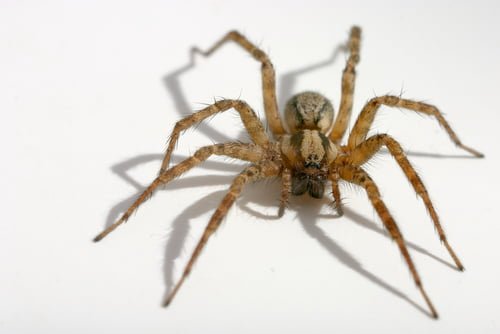
Venomous species
New Zealand is home to many spiders, but only three species are considered dangerous to humans: katipō (Latrodectus katipo), redback (Latrodectus hasselti) and whitetail (Lampona cylindrata). Katipō and redback spiders belong to the widow family and have neurotoxic venom. Bites are rare; the katipō is now endangered and restricted to coastal sand dunes. Redback spiders arrived from Australia and are established mainly in the warmer North Island. Symptoms of widow spider bites include severe pain, abdominal cramps, sweating and nausea (latrodectism). Antivenom is available in hospitals. Whitetail spiders are common in houses and bite only defensively; their bites typically cause localised pain and swelling without serious complications.
Control measures
Avoid handling spiders and shake out clothing or shoes stored in garages or sheds. Seal gaps in walls and install screens on windows. Remove webs with a vacuum or broom. For widow spiders, contact pest control professionals. Encourage native predators such as wasps and birds that feed on spiders.
3.2 Ticks
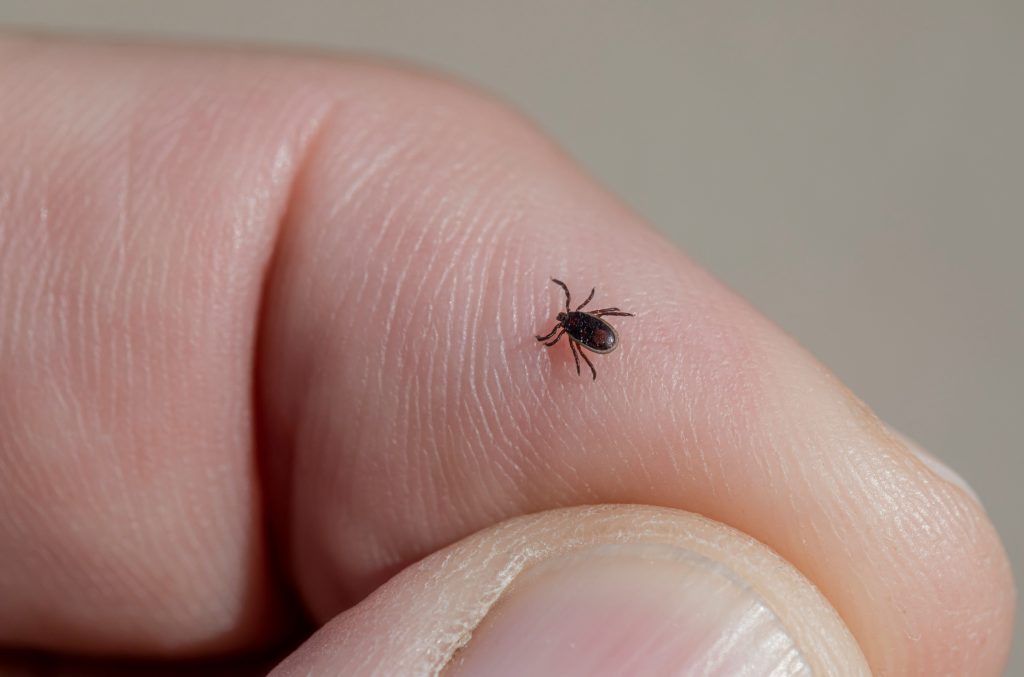
Species and biology
Ticks are parasitic arachnids that need blood meals to develop. New Zealand hosts ten endemic tick species, most parasitising birds, and one introduced cattle tick (Haemaphysalis longicornis) that infests mammals. Hard ticks have a rigid dorsal shield, while soft ticks lack one. The life cycle consists of larval, nymphal and adult stages; ticks attach to hosts and feed for several days, potentially transmitting pathogens.
Health risks
There have been no recorded cases of human disease transmission by ticks in New Zealand. However, ticks elsewhere can transmit Lyme disease, spotted fever and theileriosis. Travellers may bring exotic tick species that carry pathogens. The cattle tick can transmit Theileria orientalis to cattle, causing anaemia and production losses.
Control measures
Prevent tick bites by wearing long clothing, tucking pants into socks and using DEET‑based repellents when walking through long grass or scrub. Check yourself and pets after outdoor activities, and remove ticks promptly with fine‑tipped tweezers. Control cattle ticks with appropriate acaricides on livestock. Maintain lawns and clear brush around homes.
4. Rodent Pests
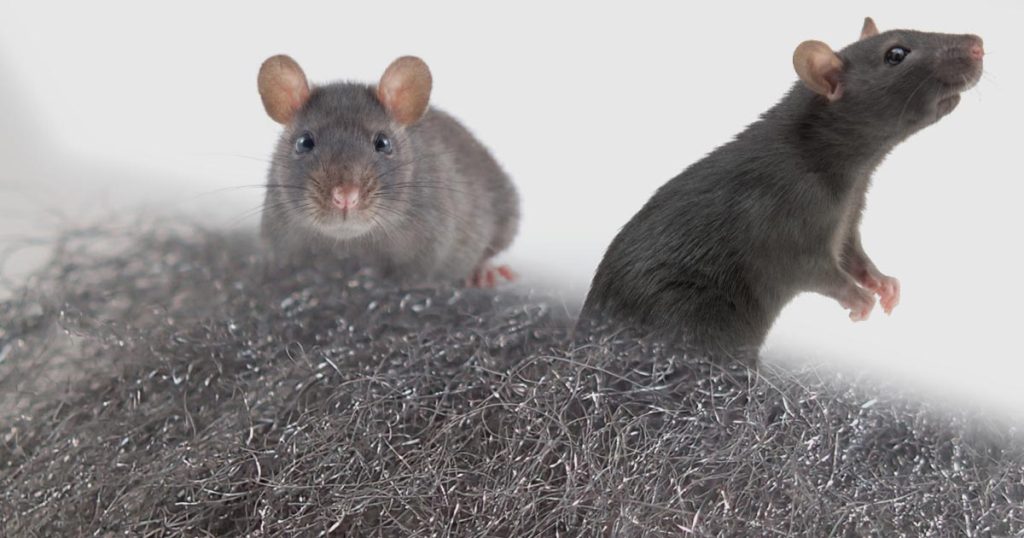
4.1 Rodent ecology in New Zealand
Four species of rodents are established in New Zealand: the house mouse (Mus musculus), black rat or ship rat (Rattus rattus), brown rat or Norway rat (Rattus norvegicus), and the Polynesian rat (kiore) (Rattus exulans). The kiore arrived with Māori ancestors around A.D. 1350 and is now restricted to offshore islands. Black and brown rats arrived on European ships and colonised the main islands; black rats are more common in urban areas and can climb well. Brown rats prefer sewers, watercourses and piggeries. House mice are ubiquitous, from sea level to alpine regions, and occasionally experience population eruptions during mast years.
Rodent behaviour and reproduction
Rodents are commensal with humans, meaning they benefit from our food and shelter. They are opportunistic omnivores, eating grains, fruits, meat and waste. Females reproduce multiple times per year, producing litters of 4–12 offspring. Rats live for about one year in the wild; mice have shorter lifespans. Rodents are active mainly at night. A single sighted rat often indicates the presence of 20–50 unseen individuals.
Health and property risks
Rodents spread zoonotic diseases including leptospirosis, salmonellosis, giardiasis and toxoplasmosis. They contaminate food, damage insulation and building materials, chew electrical wiring (creating fire hazards), and tunnel under foundations and water pipes. Their urine and faeces produce odours and can cause anxiety and distress for occupants. Mouse droppings and shed hair may trigger allergies. Leptospira bacteria persist in rodent urine; mice and rats excrete millions of pathogens per millilitre. A 2019–22 study found that people diagnosed with leptospirosis were 2.2 times more likely to have seen evidence of rodents than controls.
Control and prevention
Integrated pest management includes exclusion, sanitation and population reduction. Seal entry points around foundations, roofs and pipes with steel wool or metal flashing; rats can gnaw through wood and even soft metals. Keep food in rodent‑proof containers, repair leaking pipes and remove clutter. Use snap traps, multi‑catch traps or live traps for small infestations. For larger populations, anticoagulant baits (rodenticides) may be necessary; these should be placed in tamper‑resistant bait stations to prevent accidental poisoning of pets and wildlife. Electronic ultrasonic devices are marketed as repellents but may have limited long‑term efficacy. Professional pest controllers can assess infestation severity and recommend targeted treatments.
5. Vertebrate Pests Beyond Rodents
5.1 Nuisance Birds
Birds such as feral pigeons (Columba livia), red‑billed gulls (Chroicocephalus scopulinus), sparrows (Passer domesticus) and starlings (Sturnus vulgaris) are common around human settlements. While often admired, large flocks can cause significant problems. Bird droppings have a pH of 3–3.5 and corrode steel, paint and stone; they deface buildings and monuments. Nests constructed in gutters and vents block drainage and create fire hazards. Droppings and feathers harbour bacteria and fungi, posing health risks. Birds also produce noise, contaminate stored food and make surfaces slippery. Pigeons are the main source of fouling on buildings; gulls and sparrows can be aggressive and damage crops or stored grain.
Control methods
Prevent access to food by securing rubbish bins and cleaning up food spills. Remove standing water that attracts birds. Install bird spikes or netting on ledges, signage and rooflines to prevent roosting. Ultrasonic or audible bird repellers can deter birds from open areas. Because birds are protected under animal welfare laws, control methods must be humane and non‑lethal. Professional services can relocate or deter problem flocks.
5.2 Possums and Other Mammals
Brushtail possums
The common brushtail possum (Trichosurus vulpecula), introduced from Australia in the 19th century for the fur trade, is now one of New Zealand’s most damaging mammalian pests. Possums are marsupials; females carry their young in a pouch and give birth in May or June. Newborns are about 1.5 cm long and weigh 2 g. By seven months young possums are independent. Possums are nocturnal and arboreal; they feed on leaves, fruits and insects. In households, possums may invade roofs or attics, causing noise and leaving droppings.
Risks and control
Possums spread disease through their urine and faeces and can introduce ticks and fleas into homes. They chew electrical wiring, posing fire hazards. To prevent invasion, cover vents with slotted metal covers, trim tree branches at least 3 m from roofs, and install grid screens under low decks. Live trapping and humane relocation, or professional removal, may be necessary. Repellent devices that emit ultrasonic sound or flashing lights can deter possums.
Rabbits and hares
Rabbits and hares are mostly outdoor pests; however, in rural areas they may dig burrows under structures and damage gardens. Fencing and targeted trapping help reduce their numbers. Biological control agents (e.g., rabbit haemorrhagic disease virus) have been used on farms but are not suitable around homes.
6. Integrated Pest Management (IPM)
Integrated pest management combines multiple strategies to minimise pest populations while reducing risks to human health and the environment. The core components are:
- Monitoring and identification – Inspect regularly for signs of pests (droppings, damage, live insects). Correct identification is essential, as treatment varies by species.
- Prevention – Exclude pests by sealing entry points, maintaining cleanliness, managing waste and eliminating standing water.
- Cultural controls – Modify the environment to make it less hospitable. Examples include pruning vegetation away from buildings, storing food in sealed containers, reducing clutter and rotating stored goods.
- Mechanical controls – Use traps, barriers and physical removal. Examples include rodent traps, bird spikes and vacuuming insects.
- Biological controls – Introduce natural enemies such as predatory insects or pathogens. On farms, parasitic wasps can control fly populations; in gardens, native birds eat caterpillars.
- Chemical controls – Apply insecticides, rodenticides or repellents judiciously when other methods are insufficient. Always follow label instructions and consider using low‑toxicity products. Targeted application reduces harm to non‑target species and the environment.
- Evaluation – After treatment, assess effectiveness and adjust strategies accordingly. Ongoing monitoring is vital to detect new infestations early.
IPM emphasises long‑term solutions rather than relying solely on chemicals. Education and community involvement, such as Predator Free 2050 initiatives, support broader pest control goals.
7. Pestrol New Zealand: A Leading Provider of Pest Control Solutions
7.1 Company overview
Pestrol is a New Zealand‑owned company that supplies pest control and lifestyle products to consumers across New Zealand and Australia. Pestrol operates an online store and a retail outlet in Silverdale, Auckland. Its product range covers home and living, health and beauty, garden, cleaning and pest control categories. The pest control section is divided by pest type: crawling pests (ants, bed bugs, cockroaches, fleas, silverfish, spiders), flying pests (birds, flies, fruit flies, mosquitoes, moths, wasps), furry pests (cats, dogs, possums, rabbits, rats and mice) and slimey pests (lizards, slugs and snails). Pestrol also sells pet products and lifestyle items.
7.2 Vision and values
Pestrol’s vision is “to provide quality lifestyle products to the NZ market,” aiming to offer goods that improve customers’ lives. The company emphasises customer support, fast and reliable delivery, and responsiveness to product requests. It invites consumers to suggest new products and offers a reseller programme. Pestrol positions itself as an industry leader with over 25 years of expertise in home, garden and outdoor products, promising top‑quality and innovative solutions.
7.3 Pest control product categories
Pestrol stocks a wide array of pest management tools, including mechanical traps, electronic repellents, baits, poisons and deterrents. For example, its rodent range includes ultrasonic repellers, single and multi‑catch traps, vehicle repellers, baits and electronic devices. Products are designed to attract, repel or eliminate rodents indoors and outdoors; customers can choose based on infestation severity and preferences. The company also supplies bird spikes, ultrasonic bird repellers, wasp baits, mosquito zappers, ant baits and bed bug sprays. Pestrol emphasises non‑toxic and humane solutions where possible and provides advice through blog articles and customer support.
7.4 Educational resources
Beyond products, Pestrol offers extensive information through its blog. Articles cover topics such as how to pest‑proof your home, electromagnetic rodent control, and complete guides to specific pests (birds, possums, cockroaches). For instance, the company explains how birds can damage property, spread disease and cause accidents through slippery droppings, and it recommends humane control methods such as bird spikes and ultrasonic repellers. Another article describes the life cycle of possums and advises homeowners to cover vents, trim tree branches and install barriers to exclude them. These resources help customers make informed decisions and align with Pestrol’s customer support ethos.
7.5 Why Pestrol is the go‑to provider
Several factors make Pestrol a leading pest control supplier in New Zealand:
- Comprehensive range: Pestrol stocks products for virtually every household pest, from insects and rodents to birds and possums. This one‑stop shop simplifies pest management for customers.
- Expertise and innovation: With over 25 years of experience, Pestrol continually introduces new technologies such as ultrasonic repellents, electromagnetic rodent deterrents and award‑winning wasp baits.
- Quality and safety: The company offers effective, reliable and safe products, including non‑toxic options for households with children and pets. Products are tested to ensure quality.
- Customer support: Pestrol provides friendly, knowledgeable assistance and fast, reliable delivery. Its blog and product guides empower consumers to make informed choices.
- Sustainability: Pestrol promotes humane and environmentally responsible pest control. Many products target pests without harming non‑target wildlife, aligning with New Zealand’s conservation goals.
For these reasons, Pestrol has earned a reputation as the go‑to provider for pest control products in New Zealand.
8. Summary Tables and Quick Reference
8.1 Major pest species
| Pest group | Representative species | Key traits | Health risks | Control methods |
| Cockroaches | American cockroach (P. americana), German cockroach (B. germanica) | Flattened body; nocturnal; hide in cracks; resilient (months without food) | Spread dysentery, salmonella, diarrhoea; induce allergies | Seal entry points, maintain cleanliness, use baits and insecticides |
| Fleas | Cat flea (C. felis), bird flea (C. gallinae), dog flea | 1–5 mm; laterally flattened; jump long distances | Cause itchy bites; transmit tapeworms | Treat pets, vacuum and wash bedding, use insect growth regulators |
| Bed bugs | Cimex lectularius | Flat, reddish‑brown; 4–7 mm; feed on blood at night | Bites cause itching and allergic reactions | Hot washing, vacuuming, encasements, residual insecticides |
| Mosquitoes | 16 species including Aedes notoscriptus, Culex pervigilans | Slim, long‑legged; females bite; breed in standing water | Nuisance bites; potential disease vectors | Eliminate standing water, screens, repellents |
| Ants | Argentine ant, black house ant, southern ant, coastal brown ant | Colonies with queens and workers; follow trails; some species form super‑colonies | Contaminate food; some bite; displace native insects | Locate nests, use baits, residual sprays, sanitation |
| Wasps | German wasp (V. germanica), common wasp (V. vulgaris) | Social colonies; nests in trees/roofs; high densities (12–60 nests/ha) | Painful stings; anaphylaxis; damage beehives | Destroy nests early; use baits; protective clothing |
| Sandflies | NZ blackfly, West Coast blackfly, A. tillyardianum | Tiny biting flies; active at dawn/dusk | Itchy bites; no diseases in NZ | Wear protective clothing; use repellents |
| Spiders | Katipō, redback, whitetail | Widow spiders have neurotoxic venom; whitetails common in houses | Katipō/redback bites cause severe pain; whitetail bites mild | Avoid handling; remove webs; professional control |
| Ticks | 10 endemic species; cattle tick (H. longicornis) | Parasites requiring blood meals; hard and soft ticks | No human diseases recorded in NZ; potential for exotic pathogens | Cover skin; use repellents; remove ticks quickly |
| Rodents | House mouse, black rat, brown rat, kiore | Gnawing incisors; prolific breeders; commensal with humans | Spread leptospirosis, salmonellosis; damage structures; fires | Exclusion, traps, baits, sanitation |
| Birds | Feral pigeon, red‑billed gull, sparrow, starling | Flock in large numbers; acidic droppings; build nests on buildings | Corrode structures; block drains; carry bacteria and fungi | Remove food sources; install spikes and netting; humane deterrents |
| Possums | Brushtail possum (T. vulpecula) | Marsupial; nocturnal; young carried in pouch | Spread disease via urine; chew wiring; harbour ticks and fleas | Cover vents; trim trees; use repellent devices; trap and relocate |









